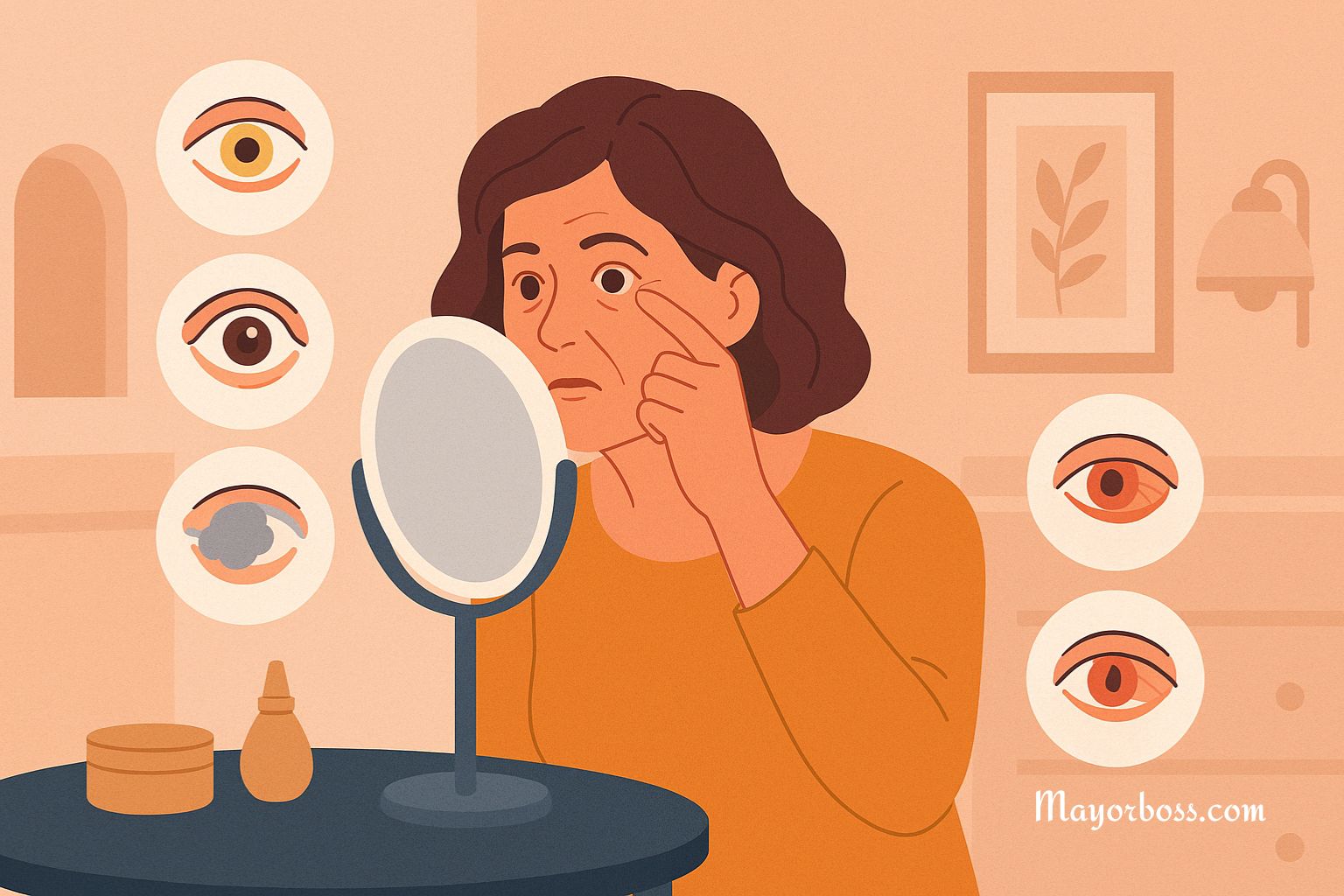Signs Your Eyes Are Telling You About Your Health
Your eyes can do more than help you see—they can reveal important clues about your overall health. Sometimes, the first signs of disease show up in your eyes, long before you notice symptoms anywhere else. Paying attention to changes in your eyes could help you catch a health issue early.
Let’s explore what your eyes might be trying to tell you.

Yellowing of the Whites
If the whites of your eyes turn yellow, this may point to a problem with your liver. A condition called jaundice happens when there’s a buildup of bilirubin in your body. This can occur when your liver isn’t working properly, possibly due to liver disease, hepatitis, or bile duct problems.1
If you notice yellowing, especially along with fatigue or dark urine, it’s important to see a doctor right away.
Bulging Eyes
Eyes that seem to bulge or stick out more than usual can be a sign of thyroid disease, especially Graves’ disease. This autoimmune condition causes your thyroid to become overactive (hyperthyroidism). Other symptoms might include weight loss, shaky hands, or fast heartbeat.2
Thyroid-related eye issues can cause dryness, irritation, and even vision changes. Treatment for the thyroid may help improve eye symptoms too.
Blurry Vision
Blurry vision can happen for many reasons, but if it comes on suddenly, it may signal something serious. For example:
- Sudden blurry vision in one eye could be a warning sign of a stroke.
- Frequent blurry vision might be related to uncontrolled diabetes, which can damage the tiny blood vessels in your eyes (diabetic retinopathy).
- High blood pressure can also affect your vision over time.
Don’t ignore vision changes—especially if they appear quickly.
Persistent Redness
Red eyes can happen when you’re tired, have allergies, or have been staring at a screen too long. But if the redness doesn’t go away or comes with pain, it might signal an infection or inflammation inside the eye, such as uveitis or conjunctivitis.
In some cases, persistent red eyes may be linked to autoimmune diseases like rheumatoid arthritis or lupus.
Dry Eyes or Excessive Tearing
Dry eyes may simply be a result of aging, screen time, or dry air. But ongoing dryness may also be related to autoimmune conditions such as Sjögren’s syndrome. This condition affects your body’s ability to produce tears and saliva.3
On the other hand, if your eyes water too much, it may be a response to dryness, blocked tear ducts, or even nerve problems.
Floaters and Flashes of Light
Seeing occasional floaters—tiny specks or strands that drift across your vision—is common as you age. But if you suddenly notice a lot of floaters, flashes of light, or a shadow in your vision, it could mean a retinal tear or detachment.
This is a medical emergency. If not treated quickly, it can lead to permanent vision loss.
Drooping Eyelid
A drooping eyelid, especially if it happens suddenly on one side, could be a sign of a problem with the muscles or nerves that control the eyelid. This condition, called ptosis, may be harmless, but it can also be related to:
- A stroke
- A brain tumor
- Myasthenia gravis (a condition that affects communication between nerves and muscles)
If you experience drooping along with weakness, slurred speech, or trouble swallowing, seek emergency care.4
Eye Pain or Pressure
Eye pain or a feeling of pressure behind the eyes is not something to ignore. These symptoms may be linked to:
- Glaucoma (a condition that damages the optic nerve)
- Sinus infections
- Migraines
- Eye infections
If you feel deep or ongoing pressure in the eyes, especially with nausea or vision changes, seek medical advice.
Trouble Seeing at Night
Struggling to see in low light might be a sign of vitamin A deficiency. This vitamin is essential for eye health and helps you see in the dark. Other causes can include cataracts or certain inherited conditions like retinitis pigmentosa.5
If night vision worsens over time, your doctor may check for nutritional issues or eye diseases.
A White or Gray Ring Around the Cornea
This ring, often called arcus senilis, can appear around the clear part of your eye. It’s usually harmless, especially in older adults. But in younger people, it may signal high cholesterol or fat levels in the blood.
It’s worth asking your doctor to check your cholesterol if you notice this change.
Final Thoughts
Your eyes are closely connected to your nervous system, blood vessels, and immune system. That’s why they can reflect changes happening throughout your body. When something seems different—whether it’s a change in color, vision, or comfort—don’t ignore it.
If you spot any of these signs, schedule a full eye exam and a health checkup. Catching health issues early often means easier treatment and better outcomes.
Your eyes are speaking—make sure you’re listening.
- https://www.ncbi.nlm.nih.gov/books/NBK544252/ ↩︎
- https://www.nhs.uk/conditions/bulging-eyes/ ↩︎
- https://www.mayoclinic.org/diseases-conditions/sjogrens-syndrome/symptoms-causes/syc-20353216 ↩︎
- https://my.clevelandclinic.org/health/diseases/14418-ptosis-droopy-eyelid ↩︎
- https://my.clevelandclinic.org/health/symptoms/10118-night-blindness-nyctalopia ↩︎
